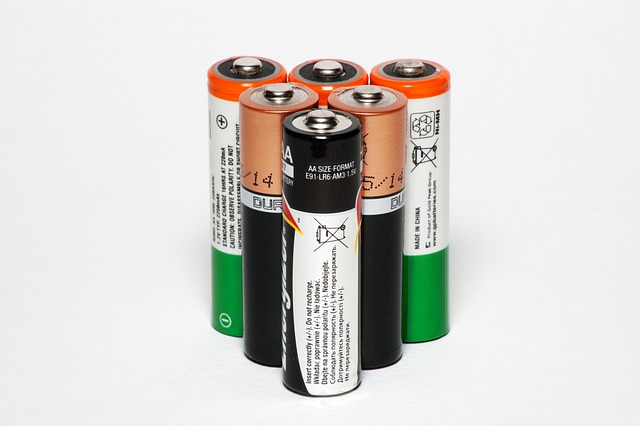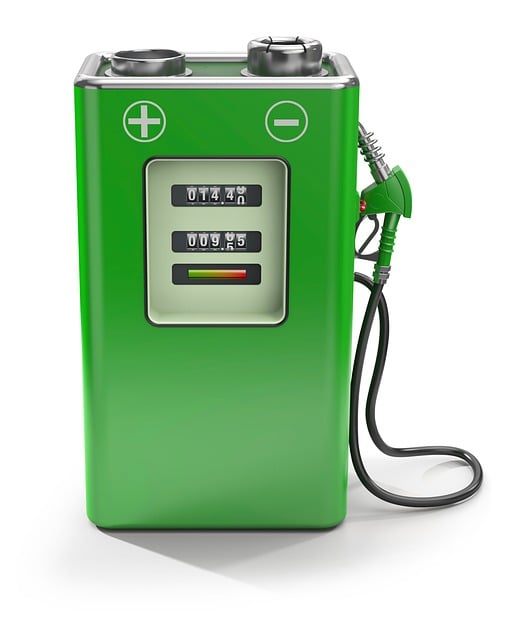When your laptop's battery performance declines and you notice shorter usage times or frequent need for charging, it's likely time to consider replacing the battery. Early detection of degradation is crucial to prevent unexpected power losses and ensure continuous performance. Monitoring through built-in diagnostic tools can alert you to low capacity, charge cycles, and overall health, providing clear indicators for when a replacement is necessary. A battery showing signs of physical degradation like swelling or bulging must be replaced immediately due to the significant safety hazards it poses. A timely battery swap, guided by manufacturer instructions, involves carefully handling the old battery, accessing the compartment, installing the new one, and calibrating it for accurate readings. Regularly checking your laptop's battery health and replacing the battery when needed will maintain its efficiency and prevent data loss, ensuring optimal performance and safeguarding both your device and personal safety.
When your laptop’s battery performance starts to wane, it’s a clear sign that a replacement might be on the horizon. This article sheds light on three definitive indicators that signal it’s time to replace your laptop battery. From degradation signs to charge retention issues and inconsistent charging patterns, understanding these red flags can help you maintain your device’s efficiency. Learn how to assess your battery’s health using built-in diagnostics tools, monitor its life between charges, and recognize the critical role of physical changes like swelling or bulging. With these insights, you’ll be equipped to replace your battery when necessary and ensure your laptop continues to run smoothly.
- Understanding the Indicators of Battery Degradation
- The Impact of Charge Retention on Your Laptop's Performance
- Assessing Battery Health with the Built-in Diagnostics Tool
- Monitoring Battery Life Between Charges for Optimal Use
- Identifying Inconsistent Charging Patterns and What They Mean
- The Role of Swelling or Bulging in Your Laptop's Battery Replacement Decision
- Steps to Safely Replace Your Laptop Battery and Maintain Its Efficiency
Understanding the Indicators of Battery Degradation

When a laptop’s battery performance begins to wane, it’s often a sign that the battery cells are degrading. This degradation can manifest in several ways, and recognizing these signs early can save you from unexpected power outages. One of the most noticeable indicators is a significant reduction in battery life, especially if there has been a consistent drop over time. If your laptop once comfortably lasted a full day on a single charge but now requires frequent recharging, it may be time to consider replacing the battery. Another sign is an increasing frequency of battery drain while the device is in use or even when it’s idling. This can be particularly evident if you notice the charge percentage dropping at a rapid pace during routine tasks. Additionally, if your laptop’s battery is no longer holding a charge as well as it used to—meaning it doesn’t reach as high a capacity as before, even after a full charge—this is yet another clear indication that a replacement battery might be in order. Regularly monitoring your laptop’s battery health and being aware of these signs can help you plan for a battery replacement before the issue escalates to the point of causing significant disruptions to your workflow or activities.
The Impact of Charge Retention on Your Laptop's Performance

When a laptop’s battery exhibits diminished charge retention, it can significantly impact your device’s performance and efficiency. Charge retention refers to the ability of the battery to hold its charge over time, particularly after periods of disuse. A battery with high charge retention will maintain most of its charge for an extended period, whereas one with poor retention might lose a substantial portion of its power within hours or days, leading you to frequently recharge your laptop. This not only disrupts your workflow but also strains the battery, potentially reducing its overall lifespan. If you notice that your laptop’s charge depletes rapidly or doesn’t hold a charge as it once did, it may be time to consider replacing the battery. A new battery can restore your laptop’s capacity to operate for reasonable lengths of time without needing a power source, which is crucial for mobile use and for maintaining productivity levels. Regularly replacing a failing battery with a high-quality one ensures that your laptop continues to perform optimally, which is essential for professionals and students who rely on their devices for both work and study.
Assessing Battery Health with the Built-in Diagnostics Tool

When your laptop begins to exhibit signs of diminished battery performance, it’s a cue to assess its health. Modern laptops often come equipped with a built-in diagnostics tool that can provide insights into the state of your battery. This feature is invaluable for users looking to understand whether their battery requires replacement. To utilize this tool, you typically need to access the system settings or use specific command prompts, depending on your operating system. Once activated, the diagnostics tool will analyze various parameters such as battery capacity, charge cycles, and health status.
A consistent reading significantly below 80% of the original battery capacity, or a noticeable reduction in battery life over time, are indicators that a replacement might be necessary. Additionally, if the laptop frequently shuts down unexpectedly when the charge is above the usual ‘low battery’ threshold, this could signify degradation beyond typical wear and tear. Regular checks using the built-in diagnostics tool will help you monitor these trends and make an informed decision regarding whether to replace your battery. It’s advisable to address this issue promptly to maintain optimal laptop performance and prevent potential data loss due to sudden power failures.
Monitoring Battery Life Between Charges for Optimal Use

When it comes to optimizing your laptop’s performance, closely monitoring your device’s battery life between charges is crucial for extended use. Over time, lithium-ion batteries experience a reduction in their capacity to hold a charge. This gradual degradation can lead to shorter operational times and unexpected shutdowns. To ensure you are getting the most out of your laptop, pay attention to the battery’s performance indicators. Notice how quickly the battery drains after charging, as this can be an early sign that it’s nearing the end of its lifespan. If you find that your laptop is no longer lasting as long as it used to between charges, or if it consistently shows a low charge level even right after plugging it in, it might be time to consider replacing the battery. Regularly checking and recording the battery levels during typical use can help you identify patterns and make an informed decision about whether a replacement is necessary. By keeping an eye on these trends, you can proactively address battery issues before they lead to a complete failure, ensuring your laptop remains reliable for all your tasks. If you’re experiencing persistent problems with your laptop’s battery life, don’t hesitate to consult professional assistance or refer to the manufacturer’s guidelines for optimal battery maintenance and when it would be advisable to replace the battery.
Identifying Inconsistent Charging Patterns and What They Mean

When your laptop displays inconsistent charging patterns, it may be a sign that your battery is reaching the end of its lifespan and needs replacement. This can manifest as erratic behavior where the battery charge level drops rapidly or doesn’t hold a charge as long as it used to. For instance, you might notice that after a full charge, your laptop’s battery percentage depletes significantly faster than usual, even when under normal use without any intensive tasks. Such inconsistencies can be attributed to the lithium-ion cells within the battery degrading over time. As these cells lose their ability to hold and release energy efficiently, they become less reliable, leading to unpredictable battery life. If you’re frequently experiencing unexpected shutdowns or having to plug in your laptop more often than before to maintain power, it’s advisable to consider a replacement battery. Addressing this issue promptly not only enhances your computing experience but also protects your device from potential damage due to power interruptions.
The Role of Swelling or Bulging in Your Laptop's Battery Replacement Decision

When evaluating whether your laptop’s battery requires a replacement, one of the most visible signs is swelling or bulging. This physical distortion indicates that the internal cells are stressed beyond their safe operational limits. As lithium-ion batteries age, they can become less efficient and more prone to overheating, which may lead to this expansion. If you notice your battery protruding from its usual compartment or appearing abnormally inflated, it’s a clear warning that the battery’s integrity has been compromised. Continuing to use a swollen battery can pose a significant safety risk, including overheating, leakage, or even an explosion. It’s advisable to replace the battery immediately upon noticing such signs to prevent potential damage to your laptop and to ensure your safety. Regularly monitoring the condition of your battery and replacing it as needed can extend the lifespan of your device and maintain its optimal performance.
Steps to Safely Replace Your Laptop Battery and Maintain Its Efficiency

When your laptop’s battery performance starts to wane, it may be time to consider replacing it. A degraded battery can lead to reduced efficiency and an increased likelihood of unexpected shutdowns. To ensure a safe and efficient replacement, follow these steps carefully. Firstly, power down your laptop completely and disconnect any external power sources. This step is crucial to prevent any electrical interference or damage during the battery removal process. Next, consult your laptop’s user manual or service guide for specific instructions on accessing the battery compartment. Typically, this involves removing a few screws and carefully prying open the casing to reach the battery unit. Once you have accessed the battery, proceed with caution. Remove the old battery and inspect it for any bulging or damage that may have occurred over its lifespan. Ensure that you handle the new battery with clean, dry hands to avoid any contamination or short-circuiting. When installing the new battery, align it properly in its designated slot and secure it as recommended by the manufacturer. After replacement, reassemble your laptop carefully, making sure all components are firmly in place. Upon completion, charge the new battery to 100% and then allow it to calibrate by discharging it to about 5%, followed by a full recharge. This process helps in setting the battery’s capacity gauge accurately. To maintain its efficiency, avoid leaving your laptop plugged in once the battery is fully charged; this can lead to overcharging and reduce the lifespan of the battery. Additionally, regularly recalibrate the battery by following similar steps as initial calibration to keep the battery meter accurate. By adhering to these guidelines, you can extend the life of your new battery and ensure optimal performance from your laptop.
When your laptop displays signs of battery degradation, proactively replacing the battery can extend its lifespan and ensure uninterrupted productivity. Recognizing the nuances of charge retention, utilizing built-in diagnostics, and monitoring performance between charges are critical steps for assessing your laptop’s battery health. If you notice inconsistent charging patterns or any swelling, it’s a clear indication that a battery replacement is due. By following the outlined safety measures for battery removal and installation, you can maintain peak efficiency of your device. Remember, addressing these issues promptly with a battery replacement can save you from potential data loss and enhance your laptop’s performance.
